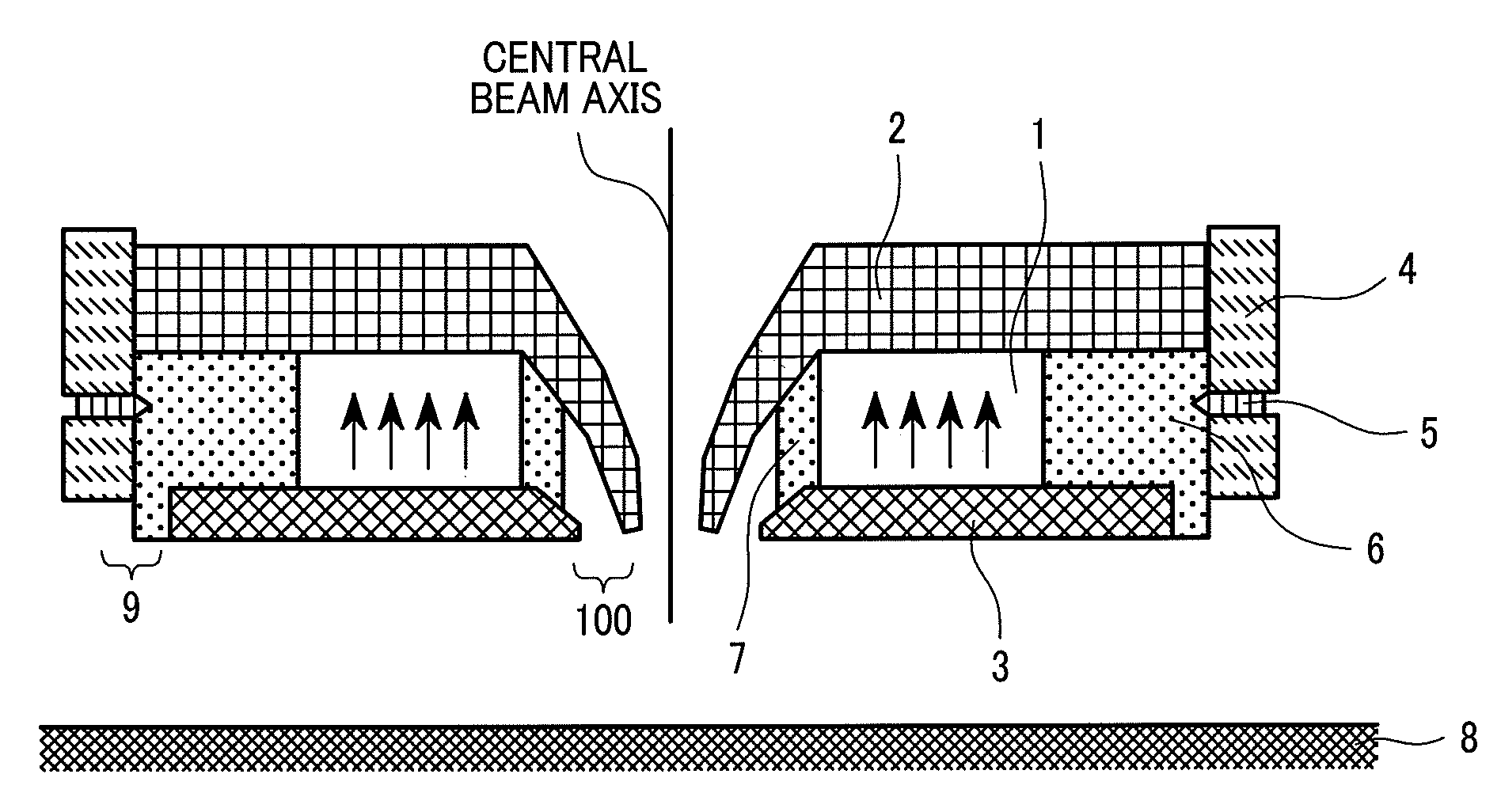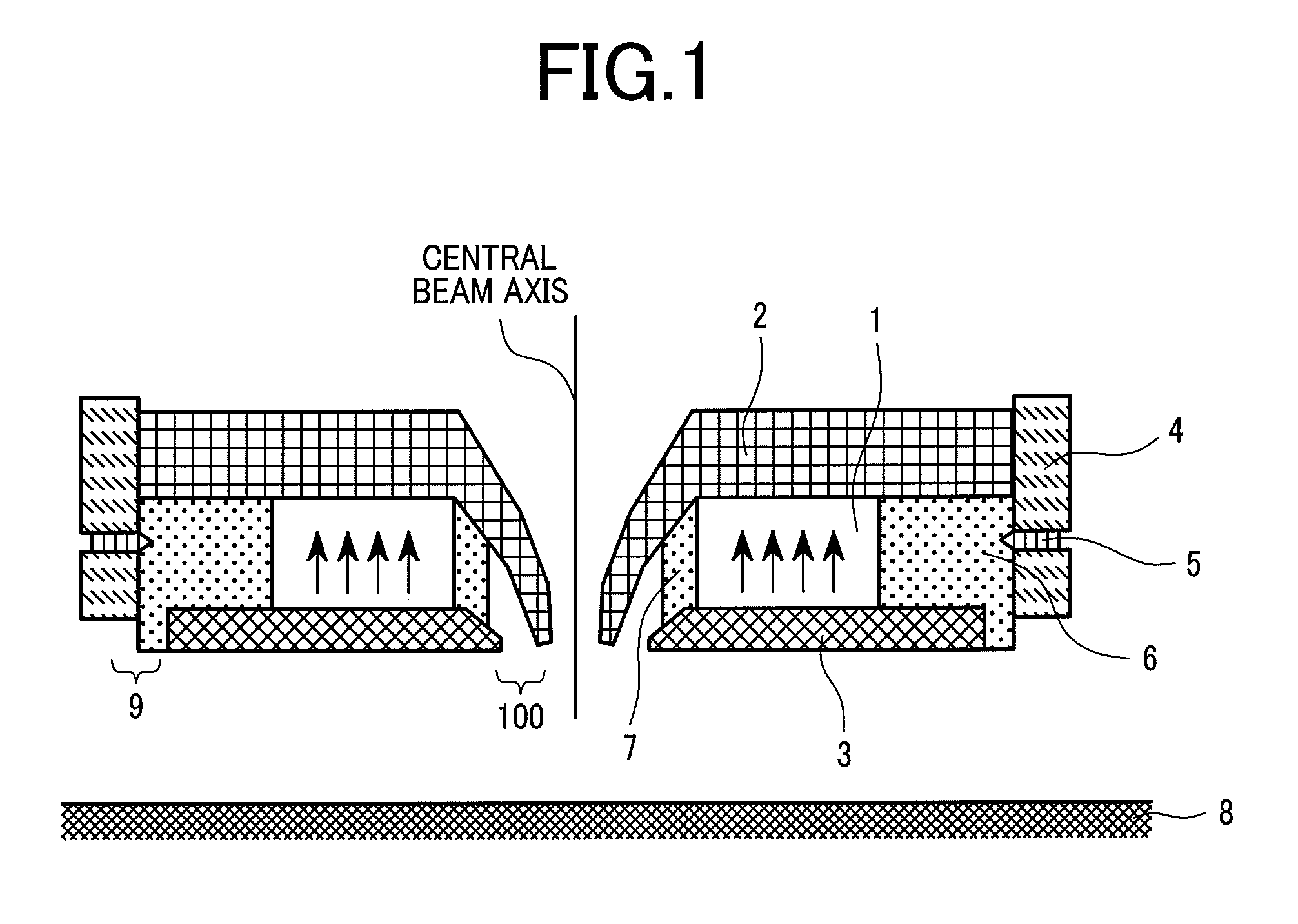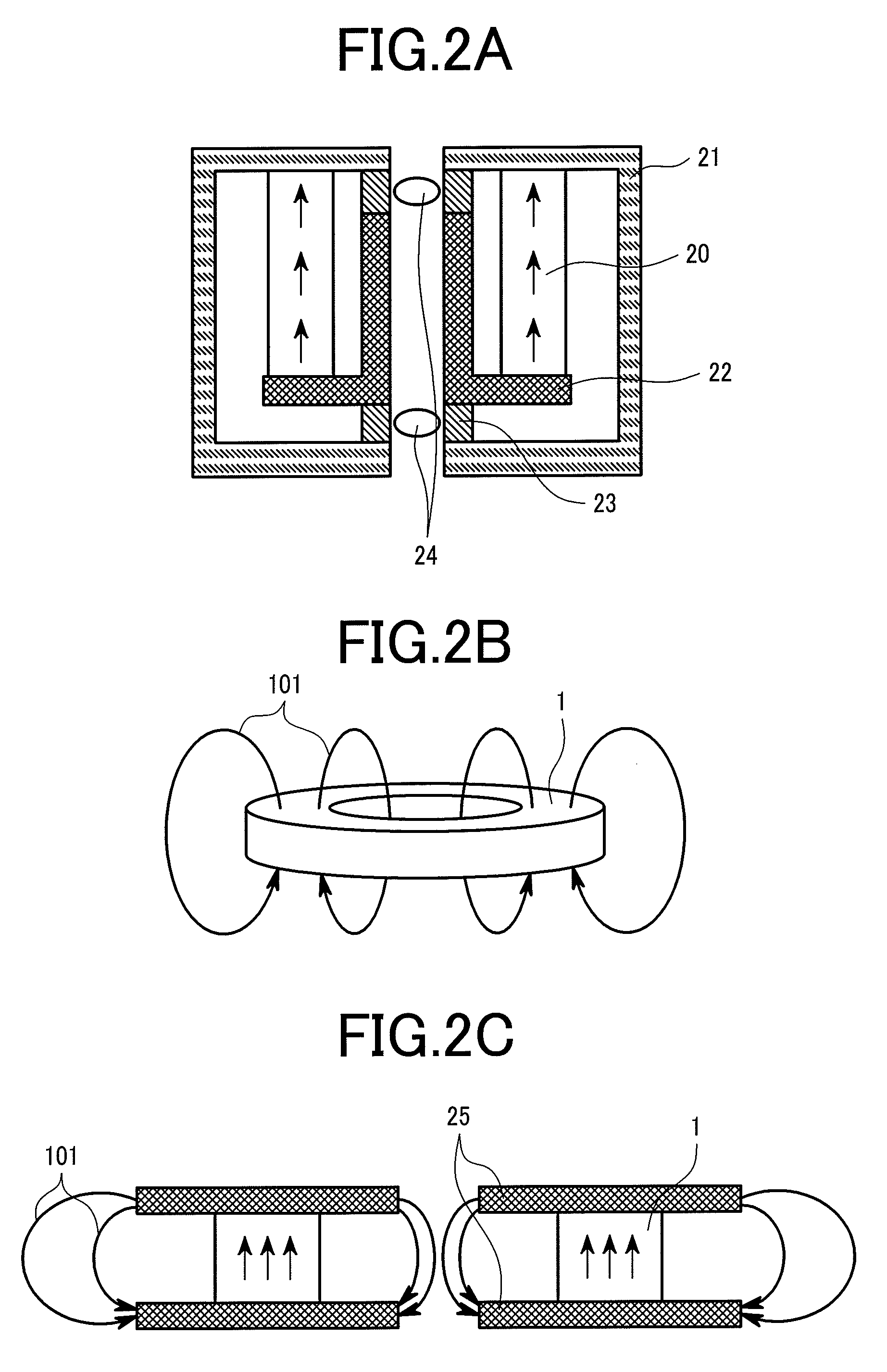Electron Lens and Charged Particle Beam Apparatus
a technology of charged particle beam and electron lens, which is applied in the direction of discharge tube/lamp details, magnetic discharge control, instruments, etc., can solve the problems of affecting the operation adversely affecting the magnetic leakage of electron optical system or any other apparatus located outside the lens, and hazarding the use of the sem or performing maintenance work. , to achieve the effect of high resolution
- Summary
- Abstract
- Description
- Claims
- Application Information
AI Technical Summary
Benefits of technology
Problems solved by technology
Method used
Image
Examples
first embodiment
[0041]FIG. 1 shows a cross section of a structure serving as an electron lens (compact objective lens) according to the first embodiment of the present invention. A permanent magnet 1 having a hole in the center thereof, having an axially symmetrical shape (doughnut shape), and exhibiting axially symmetrical magnetism is magnetized vertically in the drawing and has an upper magnetic pole 2 and a sample-side magnetic pole 3, which are made of a permalloy, attached to the respective poles thereof. An inner gap 100 created between the magnetic poles is oriented to a sample near the axis. Flux is generated in a vacuum from the gap, and an axial magnetic field is induced on the center axis of the lens structure on the side of a sample, that is, below the lens structure. The magnetic field functions as a magnetic lens. The peak of a magnetic flux density is on the order of 0.2 Tesla. A working distance (WD) ranges from about 2 mm to about 4 mm. The magnetic lens is optimal for an electron...
second embodiment
[0065]FIG. 7 shows the second embodiment of the present invention implemented in a compact electrostatic column in order to attain a high resolution.
[0066]Herein, an electron gun 70 is exhausted using a sheet-type non-evaporable getter pump 72, which is disposed inside, instead of an ion pump. This is intended to employ a high-performance Schottky electron beam source 71 and attain a compact design. The outer diameter of the electron gun 70 including the pump is as small as 70 mm or less. For startup, a vacuum pipe is extended from a rough exhaust port 69 and coupled to a turbo molecular pump 19. After the electron gun is exhausted to somewhat create a vacuum therein, a heater 73 disposed on the external wall thereof is used to heat or activate the non-evaporable getter pump 72. Thereafter, the rough exhaust port 69 is sealed with a valve. Consequently, the interior of the electron gun 70 is retained in a super vacuum atmosphere. Heating conditions for activation are such that the n...
third embodiment
[0075]FIG. 9 shows the configuration of the third embodiment of the present invention.
[0076]Illustrated is an apparatus suitable for observing as a sample 8 a wiring pattern in a semiconductor substrate or the shape of a hole therein. An electron beam 10 generated by an electron gun 70 employing a Schottky electron beam source is narrowly converged by a condenser lens 93 realized with a magnetic field and a magnetic objective lens 74 in accordance with the present invention, and irradiated to the sample 8. The electron beam 10 is swept by a beam deflector 16. An ExB filter 90 is disposed above the objective lens 74. The ExB filter 90 is designed to apply an electric field and a magnetic field orthogonally to each other and to the axis, and to regulate the electron beam 10 so that the electron beam 10 will advance rectilinearly. The ExB filter 90 bends the trajectory of passing electrons that is low in an energy level. Assuming that an amount of energy gained by the electron beam 10 ...
PUM
 Login to View More
Login to View More Abstract
Description
Claims
Application Information
 Login to View More
Login to View More - R&D
- Intellectual Property
- Life Sciences
- Materials
- Tech Scout
- Unparalleled Data Quality
- Higher Quality Content
- 60% Fewer Hallucinations
Browse by: Latest US Patents, China's latest patents, Technical Efficacy Thesaurus, Application Domain, Technology Topic, Popular Technical Reports.
© 2025 PatSnap. All rights reserved.Legal|Privacy policy|Modern Slavery Act Transparency Statement|Sitemap|About US| Contact US: help@patsnap.com



